Let's talk Rhodesian Ridgebacks
The athletic and imposing Rhodesian Ridgeback gets its name from the trademark “ridge” of fur on its back. What it lacks in imaginative naming, the breed more than makes up for in handsome looks, loyalty and physical strength. The Rhodesian Ridgeback was originally bred as a hunting dog in what was then known as Rhodesia in southern Africa but nowadays makes a playful and affectionate pet for a family with enough space to welcome this large hound.
Official name: Rhodesian Ridgeback
Other names: African Lion Hound
Origins: Southern Africa
Drooling tendencies
1 out of 5Shedding Level
3 out of 5Energy level*
3 out of 5Compatibility with other pets
4 out of 5Warm weather?
3 out of 5Suited to apartment living
1 out of 5Family pet?*
4 out of 5Can stay alone
2 out of 5
| Male | Female |
|---|---|
| Height | Height |
| 64 - 69 cm | 61 - 66 cm |
| Weight | Weight |
| 36.5 - 37.5 kg | 32 - 33 kg |
| Life stages | |
|---|---|
| Adult | |
| 15 months to 5 years | |
| Mature | Senior |
| 5 to 8 years | From 8 years |
| Baby | |
| Birth to 2 months | |
Drooling tendencies
1 out of 5Shedding Level
3 out of 5Energy level*
3 out of 5Compatibility with other pets
4 out of 5Warm weather?
3 out of 5Suited to apartment living
1 out of 5Family pet?*
4 out of 5Can stay alone
2 out of 5
| Male | Female |
|---|---|
| Height | Height |
| 64 - 69 cm | 61 - 66 cm |
| Weight | Weight |
| 36.5 - 37.5 kg | 32 - 33 kg |
| Life stages | |
|---|---|
| Adult | |
| 15 months to 5 years | |
| Mature | Senior |
| 5 to 8 years | From 8 years |
| Baby | |
| Birth to 2 months | |
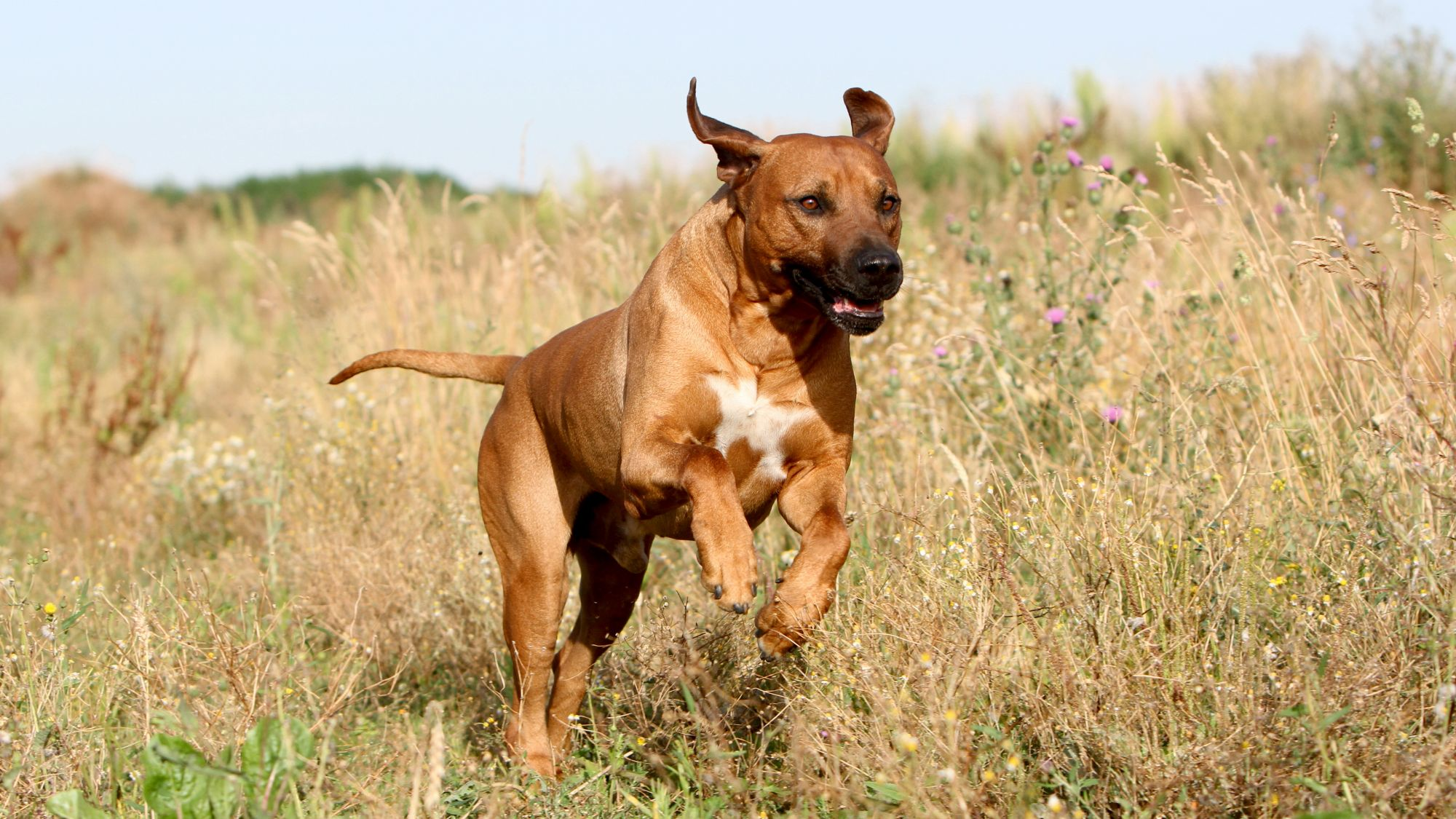
Get to know the Rhodesian Ridgeback
All you need to know about the breed
Nowadays Rhodesian Ridgebacks are prized just as much for their handsome appearance, all glossy wheaten coats and big brown eyes and their loyal and affectionate natures as they were in the old days for their courage and athleticism. But that physical strength, dating back to their southern African origins hunting lions (hence their early name of African Lion Dog) is certainly formidable: these are imposing, muscular dogs, with plenty of energy and they need regular walks as well as chances to run in safely enclosed spaces – they may not be hunting lions anymore but their prey drive is still strong.
Once trained, Rhodesian Ridgebacks are not known to be aggressive. In fact they are friendly and affectionate with their human families and playful and gentle with children (although of course they should never be left unsupervised and as they’re so big, they may be intimidating to very small kids).
The Rhodesian Ridgebacks of yore were also put to use guarding remote farms so it’s no surprise that their modern-day counterparts have maintained a certain wariness of strangers. They are fiercely protective of their families will bark to let you know if something seems amiss.
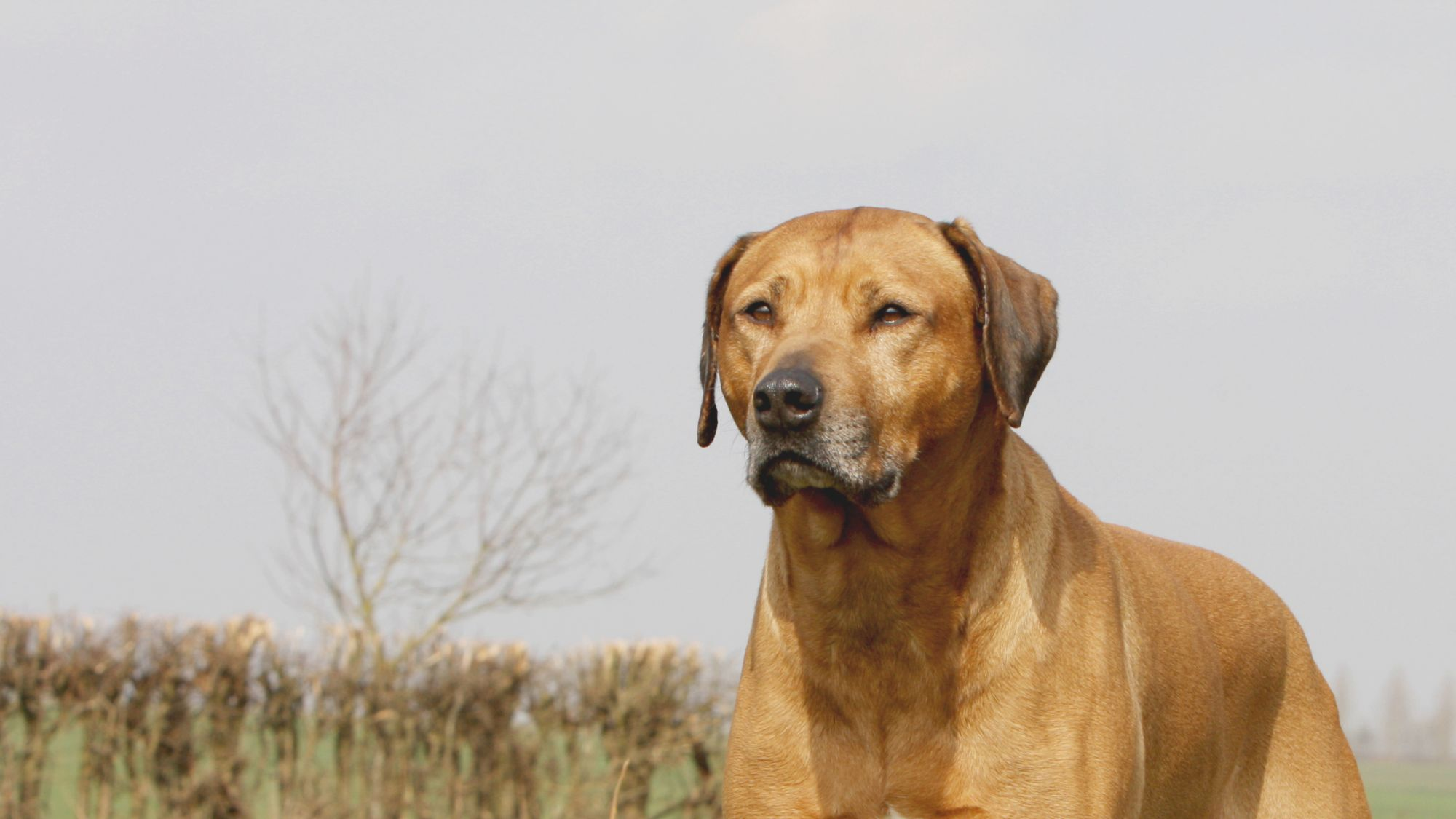
2 facts about Rhodesian Ridgebacks
1. Hollywood hound
Not content with their adventurous origins in the wilds of southern Africa, the Rhodesian Ridgeback breed has also had its brush with stardom. Among the earliest breeders of Rhodesian Ridgebacks in the United States was the movie star Errol Flynn, who raised the dogs on his Hollywood ranch in the 1930s.
2. Rhodesian Ridgeback, I presume?
One of the earliest and most famous depictions of an African ridge-backed dog appears in the Scottish missionary Dr David Livingstone’s account of his 1853 expedition, Missionary Travels in South Africa, which was published in 1857 and shows a dog with the distinctive ridge of fur along its spine running in the opposite direction to the rest of its coat—the defining feature of the Rhodesian Ridgeback.
History of the breed
While the dog we now know as the Rhodesian Ridgeback breed was developed in the late 19th century, its origins date back many centuries earlier, to crosses between European breeds including Greyhounds and Terriers, Mastiffs, Bloodhounds and Great Danes brought to southern Africa by Dutch settlers and local breeds such as the ridged Khoikhoi dog.
The resulting combination of speed, stamina and fearlessness made the Rhodesian Ridgeback the dog of choice both for hunting and for guarding farmsteads.
As big game hunting began to wane in popularity, the survival of the Rhodesian Ridgeback breed came under threat, but a breed standard was set out in the early part of the 20th century and the breed got its name in the 1920s before being recognised by the American Kennel Club in 1955.
From head to tail
Physical characteristics of Rhodesian Ridgebacks
1.Fur
2.Coat
3.Body
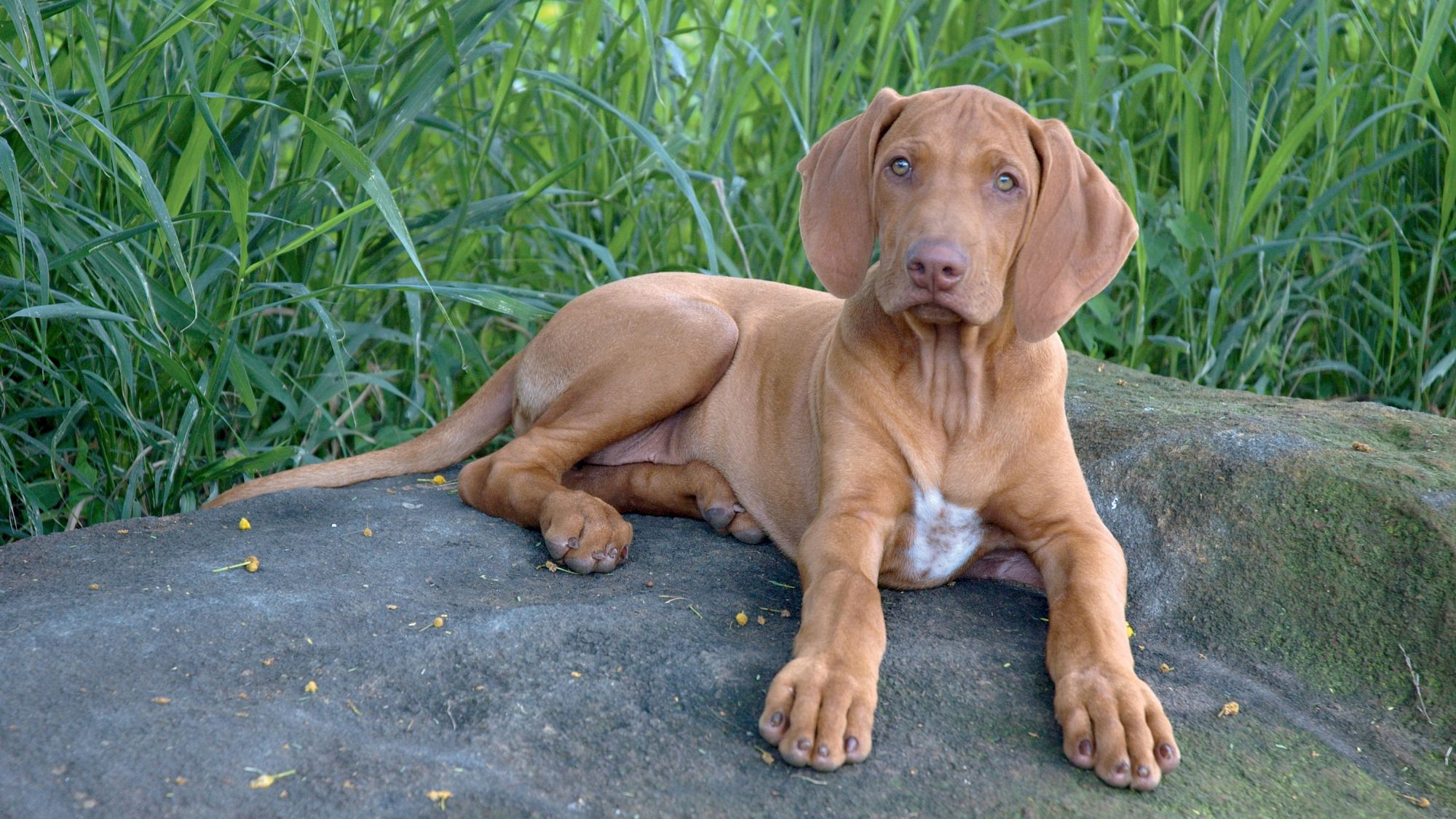
Things to look out for
From specific breed traits to a general health overview, here are some interesting facts about your Rhodesian Ridgeback
Hip problems
In common with other large breeds, Rhodesian Ridgebacks can suffer from hip dysplasia, an inherited condition in which the thigh bone and the hip joint do not fit together as they should, causing pain and lameness and sometimes leading to arthritis as the dog gets older. To minimise the risk, make sure your dog eats the right amount of the right food—excessive weight gain can worsen the condition.
Dermoid sinus
Dermoid sinus is a congenital skin defect involving a cyst along the spine, which can sometimes penetrate the skin and become infected, causing the dog problems. Rhodesian Ridgebacks are one of the breeds that are predisposed to the condition (linked to their distinctive ridge) which can be corrected with surgery. Regular check-ups with your vet will ensure this or any other health problems are spotted early and treated swiftly if necessary.
Healthy diet, healthier dog
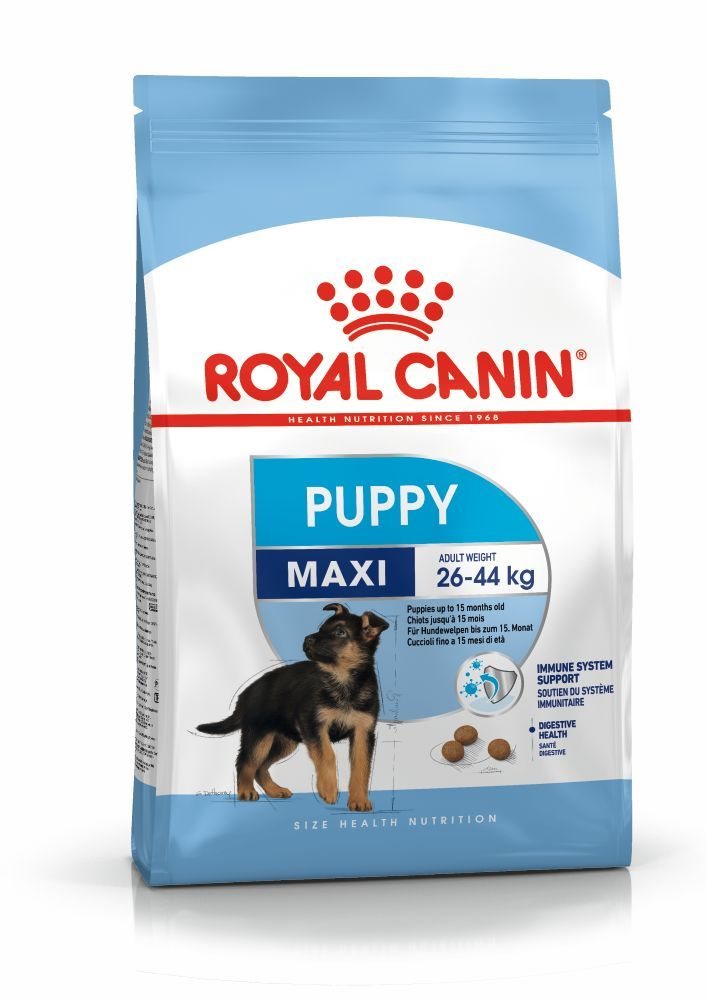
When choosing food for a Rhodesian Ridgeback, there are many factors to consider: their age, lifestyle, activity level, physiological condition, and health including potential sickness or sensitivities. Food provides energy to cover a dog’s vital functions, and a complete nutritional formula should contain an adjusted balance of nutrients to avoid any deficiency or excess in their diet, both of which could have adverse effects on the dog.
Clean and fresh water should be available at all times to support good urinary regularity. In hot weather and especially when out exercising, bring water along for your dog’s frequent water breaks.
Energy intake may also have to be adapted to the climatic conditions. A dog that lives outdoors in winter will have increased energy requirements.
The following recommendations are for healthy animals. If your dog has health problems, please consult your veterinarian who will prescribe an exclusively veterinary diet.
A Rhodesian Ridgeback puppy’s requirements, in terms of energy, protein, minerals and vitamins, are much greater than those of an adult dog. They need energy and nutrients to maintain their body, but also to grow and build it. Until they are 15 months old, Rhodesian Ridgeback puppies’ immune system develops gradually. A complex of antioxidants – including vitamin E – can help support their natural defences during this time of big changes, discoveries, and new encounters. Their digestive functions are different from an adult Rhodesian Ridgeback’s, too: their digestive system is not mature yet so it is important to provide highly digestible proteins that will be effectively used. Prebiotics, such as fructo-oligosaccharides, support digestive health by helping balance the intestinal flora, resulting in good stool quality.
It is important to choose a kibble with an appropriate size, shape, and texture. This growth phase also means moderate energy needs. Large-breed puppies, such as Rhodesian Ridgeback puppies, whose growth period is long and intense, are especially susceptible to skeletal and joint problems, including limb defects, bone deformities, and joint lesions. The first part of growth is mainly concerned with bone development, although the muscles also start to grow. This means that a puppy that eats too much - takes in too much energy - will put on too much weight and grow too quickly. Limiting the energy concentration of a food for Rhodesian Ridgeback puppies and feeding a correct daily amount will help control the speed of growth and minimise these risks.
Concentrations of other nutrients should be higher than normal in a specially formulated growth food. Although the calcium content in the food needs to be increased, maxi-sized breed puppies are more sensitive to excessive calcium intake. It’s important to understand then that adding any ingredients to a complete food formulated for the growth phase is at best unnecessary and at worst dangerous for the animal, unless prescribed by a veterinarian. It is recommended to split the daily allowance into three meals a day until they are 6 months old, then to switch to two meals per day.
Throughout their life, it is important to avoid feeding Rhodesian Ridgebacks human foods or fatty snacks. Instead, reward them with kibble taken from their daily meal allowance, and strictly follow the feeding guidelines written on the package in order to prevent excessive weight gain.
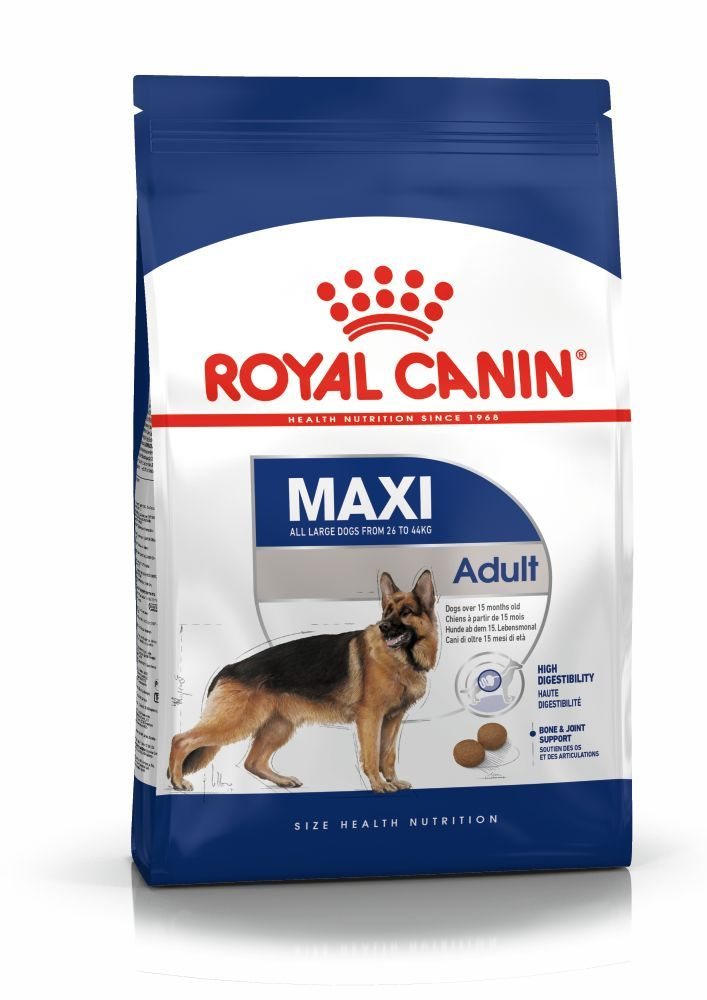
The main nutritional goals for adult Rhodesian Ridgebacks are:
Maintaining an ideal body weight by using highly digestible ingredients and keeping the fat content at a sensible level.
Helping to support the health of their bones and joints with glucosamine, chondroitin, and antioxidants.
Promoting optimal digestibility with high-quality protein and a balanced supply of dietary fibre.
Helping preserve the health and beauty of the skin and coat with the enriched addition of essential fatty acids (especially EPA-DHA), essential amino acids, and B vitamins.
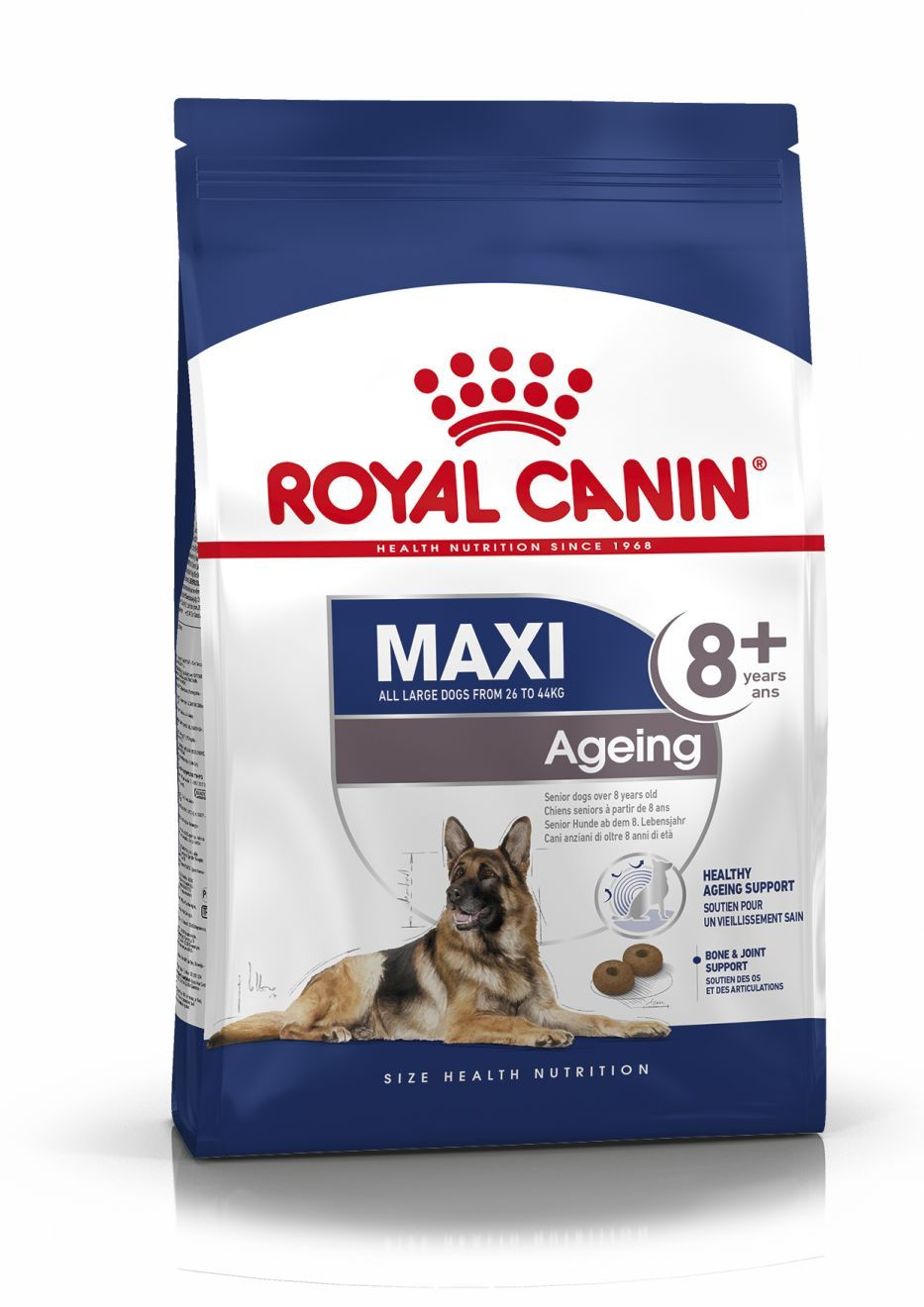
After five years old, Rhodesian Ridgebacks will start facing the first signs of ageing. A formula enriched with antioxidants will help maintain their vitality, and specific nutrients, such as chondroitin and glucosamine, will help support healthy bones and joints. Ageing is also accompanied by the modification of digestive capacities and particular nutritional requirements, so food for older Rhodesian Ridgebacks should have the following characteristics:
Higher vitamin C and E content. These nutrients have antioxidant properties, helping to protect the body’s cells against the harmful effects of the oxidative stress linked to ageing.
High-quality protein. Contrary to a widely held misconception, lowering the protein content in food brings little benefit in limiting kidney failure. In addition, older dogs are less efficient at using dietary protein than younger dogs. Reducing the phosphorus content is a good way of slowing down the gradual deterioration of kidney function.
A higher proportion of selected trace elements to maintain the skin and coat in good condition.
A higher quantity of polyunsaturated fatty acids to help maintain the quality of the coat. Dogs can normally produce these fatty acids, but ageing can affect this physiological process.
As they age, dogs increasingly suffer from teeth problems. To ensure they continue to eat in sufficient quantities, the size, shape, and texture of their kibble needs to be tailored to their jaw.
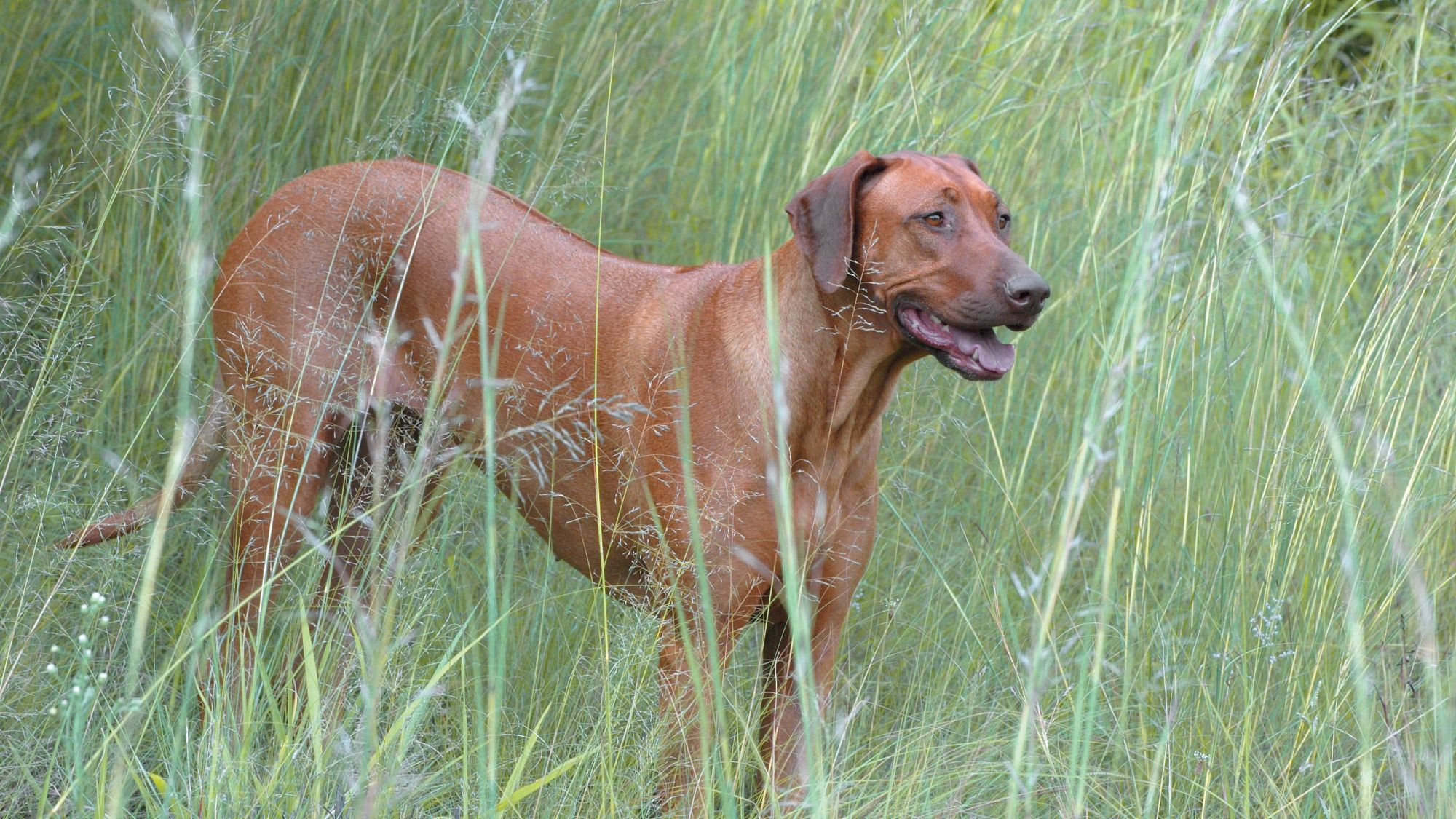
Caring for your Rhodesian Ridgeback
Grooming, training and exercise tips
7/7
All about Rhodesian Ridgebacks
Once trained, Rhodesian Ridgebacks are not known to be aggressive, although they do need plenty of firm, early and consistent training to put them at ease in everyday situations and ensure their naturally territorial instincts are kept in check.
Yes – once trained, playful and affectionate Rhodesian Ridgebacks get on well with children, although as for any other breed they shouldn’t be left alone with them. Thanks to their long-honed guard dog instincts, they can be territorial, barking to let their humans know when strangers are near.
Suggested Breeds
Read more on this topic
- Veterinary Centers of America https://vcahospitals.com/;
- Royal Canin Dog Encyclopaedia. Ed 2010 and 2020
- Banfield Pet Hospital https://www.banfield.com/
- Royal Canin BHN Product Book
- American Kennel Club https://www.akc.org/
Like & share this page